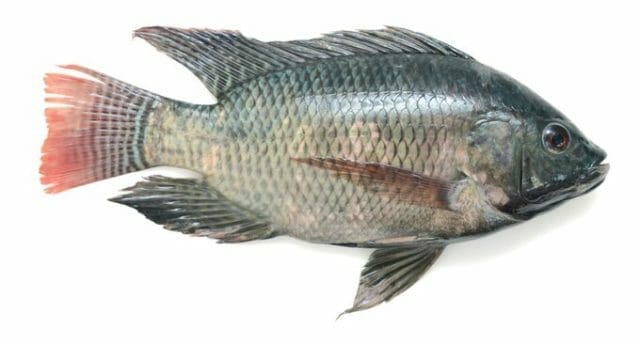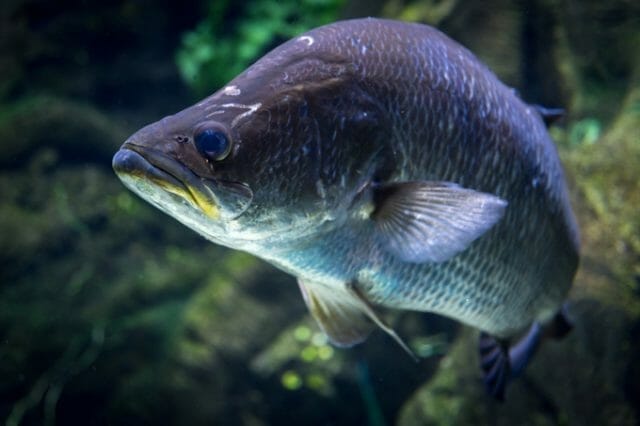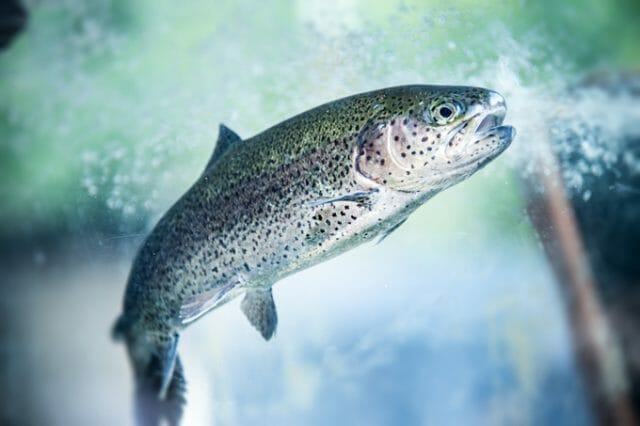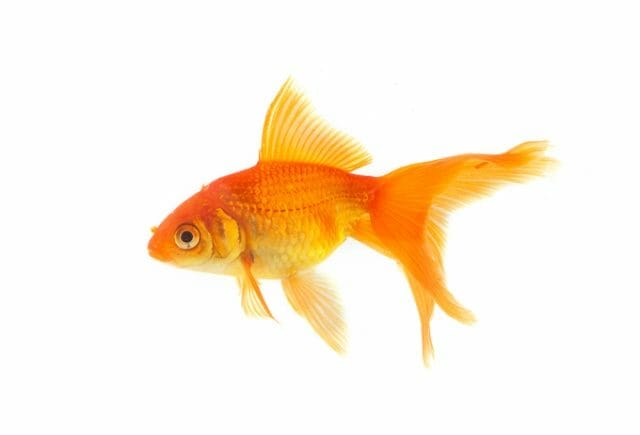Here is the list of best fish for small aquaponics system.
These days, healthy and sustainable ways to produce food are becoming more accepted by people. To maintain a good physical condition, you need to follow a balanced diet and take healthy fresh food.
Furthermore, due to the explosion of the world’s population, agricultural farming lands are drastically decreasing. Therefore, to solve these immense problems, new cultural technology is introduced, and it is called “Aquaponics.”
So, aquaponics is a food-growing culture system where the soil is not needed to grow plants. Instead of soil, plants grow on the water.
The method is the interaction between two main components: plant and others are aquatic animals, especially fish. The process in which fish are kept in an indoor aquarium for rearing and the aquarium’s water is used to nourish the plants.
It is a recycling process where heavy nutritional water helps the plant grow, and the plant filters the water and makes it cleaner for fish to live.
The above part is about the straightforward concept of aquaponics and how it works. But not all fish and plants are suitable for this method. Today, we will emphasize the best fish for small indoor aquaponics systems in terms of eating and ornamentation. So, let’s begin.
1. Tilapia

Tilapia is one of the best options for the culture system due to its wide range of adaptability. It is considered the hardest fish around because of the wide tolerance level and food selection.
The fish can survive easily within the range between (11-17°C or 52-62°F) temperature and extreme pH levels such as 6-9. Another positive side is that it is an omnivore, so you do not need to worry about food. Food like pellets, high protein flakes, and other food items can be fed.
Moreover, the FCR (Food Conversion Ratio) is extremely high, around 1.3 kg per single food kilogram. Also, the fish has excellent taste.
2. Catfish
As we know, catfish need a larger space for rearing because of the fish’s rapid growth. Catfishes are extremely hardy and can survive and thrive in impossible environmental conditions.
The fish can tolerate the temperature range between (20-24°C or 68-75°F) and wide varieties of pH (5-8) depending on the species. Some of the recommended catfish for this method are pleco, cory, and bristlenose catfish.
They are generally benthic feeders, so they need to provide pellets that sink quickly. Commonly, catfish feed at night hours, so feeding should be given in low light.
3. Barramundi

It is commonly known as the Asian sea bass. The fish is high resistance in the indoor tank condition, but you need to make sure there is ample space because of their rapid growth.
It can easily adjust to a wide range of temperatures, such as (26-30°C or 78.8-86°F). But you need to assure the high protein food and live food. Some of the best foods are insects, frozen fish, shrimp, and other crustaceans.
If the temperature gets below 20°C, it will stop feeding. It can adapt to a 7-8 pH level. The taste of the fish is amazing due to that is popular in aquaculture and aquaponics system.
4. Murry cod
Murry is great for a small indoor aquaponics system, but it needs a relatively larger space. So, you have to lower the density of it. It can adjust with a highly wide range of temperature levels (8-24°C or 46.4-75.2°F) and a flexible limit of pH.
High protein food and quick multiple are a must in their feeding. Lack of feeding may end by eating their species as well as other tankmates.
But, the FCR ratio is quite good, and the taste is highly acceptable. So, it is perfect for the aquaponics system.
5. Trout

Extremely popular for its taste and delicacy. The fish is all in all, perfect for this technology, and can adapt to the platform easily. Trout has a reputation for fast growth and a high FCR ratio.
It can also tolerate the extreme environment, such as low temperature (1-22°C or 34-72°F). So, it is profitable for aquaponics culture and low risk due to the lower mortality rate.
It has a diverse range based on diet, such as algae, insects, high protein pellet, other fish, etc. One thing that should keep in mind is that due to its rapid growth and massive size, low density is preferable in the tank.
6. Bluegill
Bluegill is known to be a panfish and popular for cooking. The fish is a distinctive nature to eat every possible thing that is given to it.
Furthermore, it can tolerate a wider range of temperatures (16-27°C), which is unique due to cold to hot water. The diet consists of insects, zooplanktons, frozen bloodworms, and crustaceans.
It is friendly with other tankmates if fed well. A moderate tank size is enough to stock plenty of bluegill fish. So, it is preferable for a small indoor aquaponics system.
7. Goldfish

One of the most popular ornamental aquarium fish species is goldfish. But goldfish not only beautiful in their external appearance but also hardy fish as well.
Suppose you are not interested in eating fish, but using them for ornamental purposes, this fish one of them. It can resist divers’ water parament so, and low maintenance will not hamper the process. Besides that, goldfish can survive in a long range of temperatures (10-23°C or 50-73.4°F) and pH 7-8.4.
Aquaponics is a confined indoor system, so space is limited, and, in this circumstance, goldfish are the perfect fish. Another reason is that they can eat a wide range of food, including pellets, flakes, green vegetables, live and protein food.
Two think you meet simultaneously; one is your hobby; another is vegetable plant culture. Goldfish extremely calm in nature, so it can easily adapt to other tankmates as well.
9. Koi carp
For indoor decoration and aquaponics purposes, koi carp is highly suggested. Although it gets bigger quickly, it consists of a tremendous tolerance level.
Living in a captive condition, fish need a higher resistance level, and koi carp has it all. Besides that, the beautiful coloration makes it more appealing to keep it in the cultural system.
Koi carp can live easily from (15-25°C or 59-71°F) temperature, and the pH level is similar to goldfish. The feeding habit divers can feed commercial pellets and vegetables, but for coloration purposes, beta carotene food is more recommended.
As it needs to feed frequently, the more it eats, the more it produces fecal material and plants get a large amount of nutrition and fertilizer, which helps them thrive.
10. Betta fish
Betta or fighter is renowned for its mesmerizing appearance, beautiful coloration, and living in an indoor environment. Besides, it takes so little amount of space that it can easily introduce in aquaponics technology.
The main reason to keep this fish is for saving space and, at the same time, enhance the beauty of the place. The temperature is between (25.5-26.5°C or 78-80°F) is most suitable for their living along with a wide range of pH 6.5-8.
Betta can eat many different foods such as pellets and flakes, but live food like zooplankton and bloodworms are the favorite. As we are discussing the best fish for a small indoor aquaponics system and betta is the best.
But betta fish males are highly aggressive, so they should be kept individually in a separate tank. On the other hand, 3-5 females or more can be kept in a single aquarium.
11. Guppy
It is considered the most popular fish alongside goldfish. But according to the size, it is very small and needs a small amount of space to maintain and hardy fish.
So, it is perfect for the indoor aquarium to interact with the aquaponics system. You can put lots of guppy fish in a particular aquarium if it is moderate in size.
The fish can resist the temperature between (22-25°C or 72-78°F) and the pH of 7-8. Diet is simple; it generally feeds on pellets, flakes, green herbs, and live foods. You can have a small tank set up to start the aquaponics system with guppy fish.
Conclusion
Above discussion, it is clear that aquaponics is a promising method not only for growing plants but for fish as well. It is a complete system where both protein sources and vegetables are provided at the same time.
Besides, you can also use ornamental fish instead of edible culture fish. So, aquaponics can also be used as ornamentation if someone wants it. To conclude, aquaponics is a blessing in the farming sector, both fish and plant farming.
